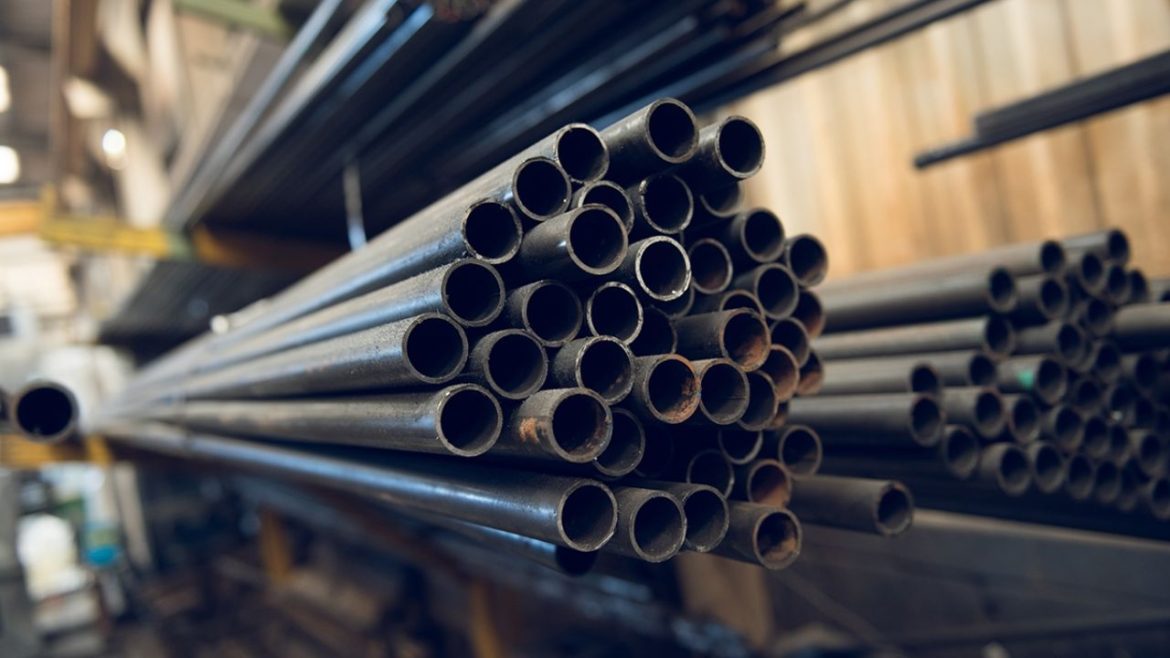Various industries that utilize steel pipes include construction, oil and gas, water systems, and manufacturing. The pipes are relied on by engineers and contractors to have good and permanent structures that are built. Knowledge of the steel pipe dimensions used is one of the most critical sections when using the pipes. Correct knowledge of pipe sizes facilitates safe, robust, and economical designs.
What Are Steel Pipe Dimensions
Steel pipe dimensions refer to the measurements that determine the size of a pipe. These are the outside diameter (OD), inside diameter (ID), and wall thickness. All three measurements can assist engineers and contractors in settling in selecting the suitable pipe to be used. The outside diameter refers to the distance between the two outside edges of the pipe. The inside diameter is the measurement of the interior passage of the pipe. The wall thickness refers to the separation between the inside and outside walls.
The Nominal Pipe Size (NPS)
The Nominal Pipe Size (NPS) system is standard in most countries, particularly in North America. NPS is a term used to refer to the size of a single pipe, yet it does not necessarily correspond to the particular dimensions. For example, a pipe marked as NPS 4 does not measure 4 inches in either its interior or exterior diameter. It then proceeds along the standard chart, which provides a ballpark figure of the pipe’s size.
Pipe Schedule Numbers
The schedule number is highly crucial when selecting the correct steel pipe. Standard schedules are S10, 40, 80, and 160. The higher the schedule, the thicker the wall, and the smaller the inside diameter of the pipe. Greater pressure can be accommodated by thicker walls, which also add weight and expense.
The contractors must align their time with the system’s requirements. A water pipeline in a residence can have Schedule 40, but a pipe in a high-pressure factory environment can have Schedule 80 or above.
International Sizing Standards
Other areas of the world have substituted NPS with the Diameter Nominal (DN) system. DN is a measurement in metric units and another description of the dimension of a pipe. Similar to NPS, DN is not always the same size as the actual inside diameter or the outside diameter. It provides an overall size based on an ordinary chart.
In many instances, engineers involved in international projects are required to operate NPS and DN systems to ensure the correct type of pipes are utilized. When the two systems are combined, they may lead to installation or design errors.
The Relevance of Precision Dimensions
The right size of pipes should be used in terms of safety, power, and optimal functionality. If a pipe is narrow, it may not be able to transport sufficient liquid or gas. The problem with this is that if it is too large, it may result in a waste of materials and increased costs. Incorrect wall thickness may cause leaks, cracks, or system failure.
Load requirements must be met by dimensioning the steel pipes in structural projects. If the sheet used on the pipe is too thin, it can wobble or break when the pressure increases. When it is too thick, it can be a bit difficult to install and could be more expensive than required.
Selecting a Pipe Suitable for the Job
Contractors and engineers should consider the job requirements before selecting a pipe. This will involve taking pressure and temperature readings, as well as checking the material being transported. It also implies considering the cost, availability, and safety regulations. Upon knowing these factors, the correct pipe size, schedule, and material can be selected.
Application of Pipe Dimension Charts
Many companies and engineers widely use pipe dimension charts to assist in pipe selection. The charts indicate the outside diameter, wall thickness, and inside diameter of the pipe for each size and schedule. By reviewing these charts, contractors can make mistakes and will locate their time more effectively during the planning and construction stages.
The use of pipe dimension charts is also helpful when conducting inspections and repairs. They assist workers in identifying the type of pipes in use and what is applicable for their replacement.
Conclusion
The size of steel pipes forms a significant component of any successful engineering and building project. Knowledge of measurements, systems such as NPS and DN, and what the numbers on schedules represent assists in making informed decisions. Sizing correctly would result in safe, cable-reliable, and economic systems in any industry. By taking the time to study the dimensions of the pipes, engineers and contractors can design and construct systems that will perform well and remain in operation for many years.

